Ever wonder why Bhutan is the only country that measures Gross National Happiness instead of GDP? It's because this tiny Himalayan kingdom knows something most of us forget: true wealth lies in experience, not possessions.
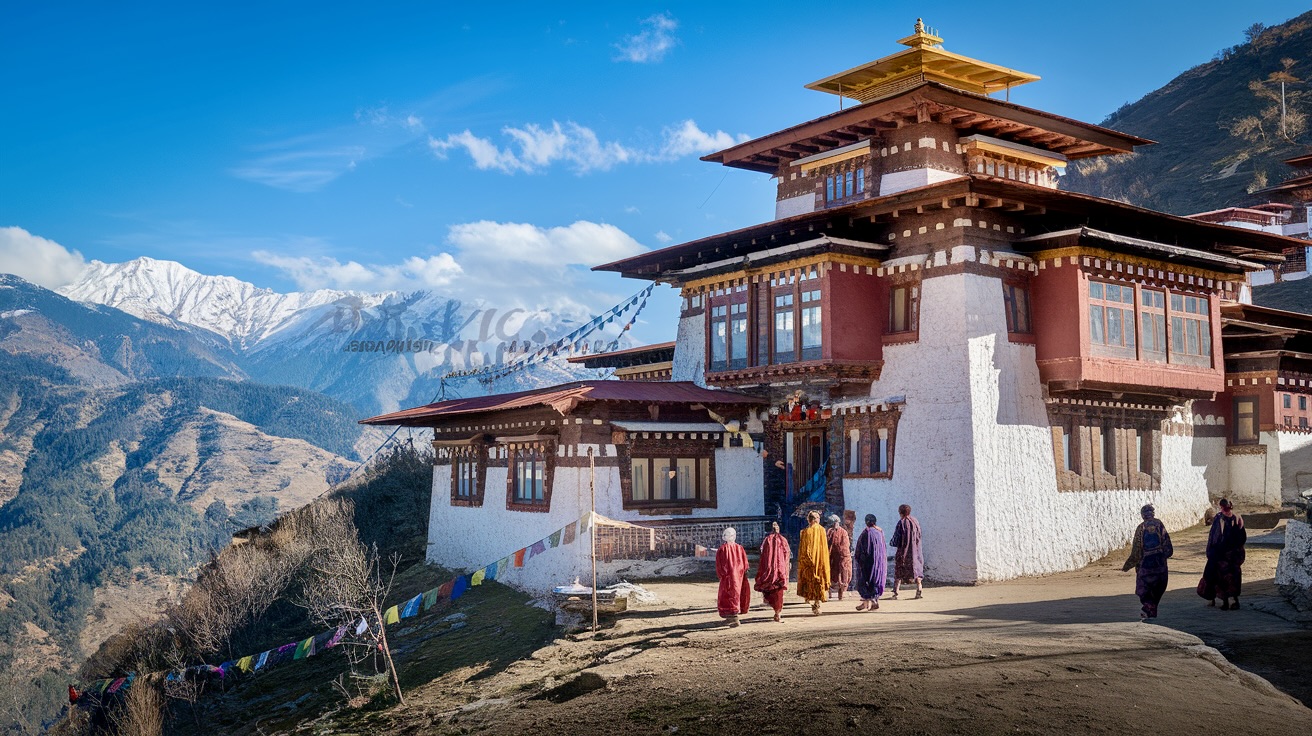
If you're dreaming of a destination that will recalibrate your soul while dazzling your senses, Bhutan's top 10 places to visit will deliver exactly that.
From the gravity-defying Tiger's Nest Monastery to the pristine valleys of Phobjikha, this list goes beyond typical tourist spots. We've curated the most breathtaking experiences in Bhutan that luxury travelers seek but rarely find in guidebooks.
But what makes the first place on our list so special that even seasoned travelers call it life-changing?
Tiger's Nest Monastery (Paro Taktsang): Bhutan's Most Iconic Landmark
History and significance of this sacred cliffside monastery
Perched dramatically on a sheer cliff face 900 meters (3,000 feet) above the Paro valley, Paro Taktsang is undoubtedly Bhutan's most recognizable cultural icon. The monastery, commonly known as Tiger's Nest, has a history deeply rooted in Bhutanese Buddhist tradition dating back to the 8th century.
The origin of this sacred site is steeped in mystical legend. According to local beliefs, Guru Padmasambhava (also known as Guru Rinpoche), the founder of Tibetan Buddhism, flew to this location on the back of a tigress. The tigress was actually his consort Yeshe Tsogyal, who had transformed herself to help him make this miraculous journey. Upon reaching the cliffside, Guru Rinpoche meditated in a cave for exactly three years, three months, three weeks, three days, and three hours to subdue evil forces in the area.

The monastery we see today was formally built in 1692 by Tenzin Rabgye, the 4th Druk Desi (temporal ruler) of Bhutan. He constructed the temple around the meditation cave where Guru Rinpoche had spent his time in deep contemplation. This act established Paro Taktsang as one of the most venerated places of pilgrimage in the Himalayan Buddhist world.
Throughout its history, many prominent Buddhist masters have meditated at this site, including Milarepa (1040-1123), Thangtong Gyalpo (1385-1464), and other renowned spiritual figures. The monastery became a central hub for the spread of Buddhism in Bhutan and remains a powerful symbol of the country's spiritual heritage.
Today, Paro Taktsang houses four main temples and residential shelters for monks who practice Vajrayana Buddhism. It continues to be a site of profound religious significance and a cornerstone of Bhutanese cultural identity.
Best times to visit and photography opportunities
The ideal seasons to visit Tiger's Nest are spring (March to May) and autumn (September to November). During these months, the weather is pleasant with clear skies and moderate temperatures, creating perfect conditions for both hiking and photography.
Spring offers vibrant landscapes with blooming flowers and lush greenery. The surrounding pine forests come alive with color, adding a magical dimension to your photographs. The clear spring air also provides excellent visibility of the distant Himalayan peaks framing the monastery.
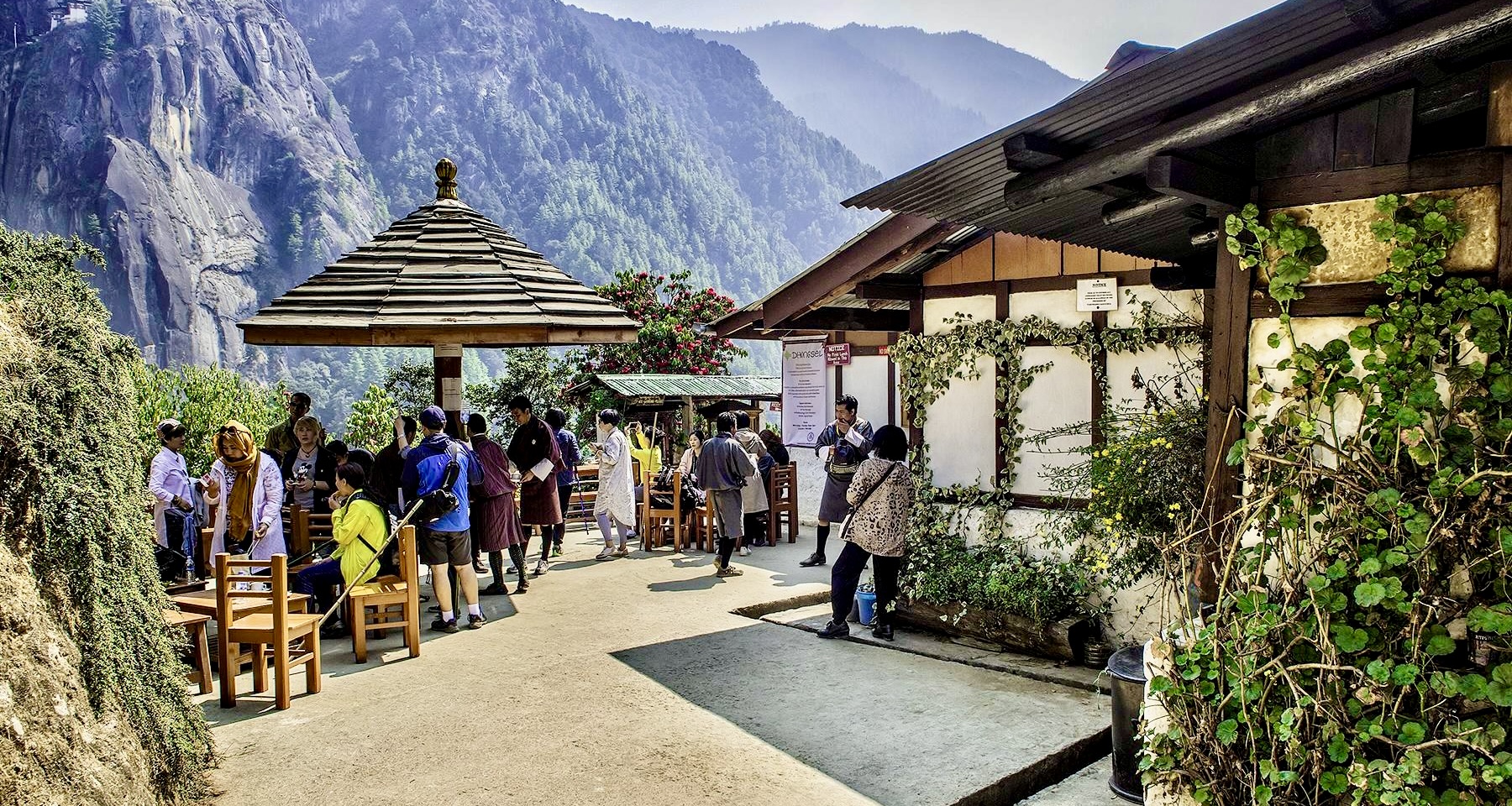
Autumn is equally magnificent, with crisp, cool air and exceptional clarity for viewing the monastery against the backdrop of mountain scenery. The autumn foliage creates a stunning contrast with the white-washed monastery walls and golden roofs. The reduced visitor numbers during this season also mean more tranquil conditions for photography.
The most iconic viewpoint is from the cafeteria at the halfway point of the hike, where you can capture the entire monastery clinging to the cliff. Another excellent photography spot is near the final viewpoint before descending to the monastery entrance, which offers a slightly different angle with prayer flags in the foreground.
Remember that photography is strictly prohibited inside the monastery buildings to preserve their sanctity. Plan to capture your best shots of the exterior and surrounding landscapes.
Practical hiking tips and what to expect on the trail
The trek to Tiger's Nest is approximately 4-5 kilometers one way with an elevation gain of about 700 meters. For most visitors, the round trip takes between 5-7 hours, including time spent exploring the monastery.
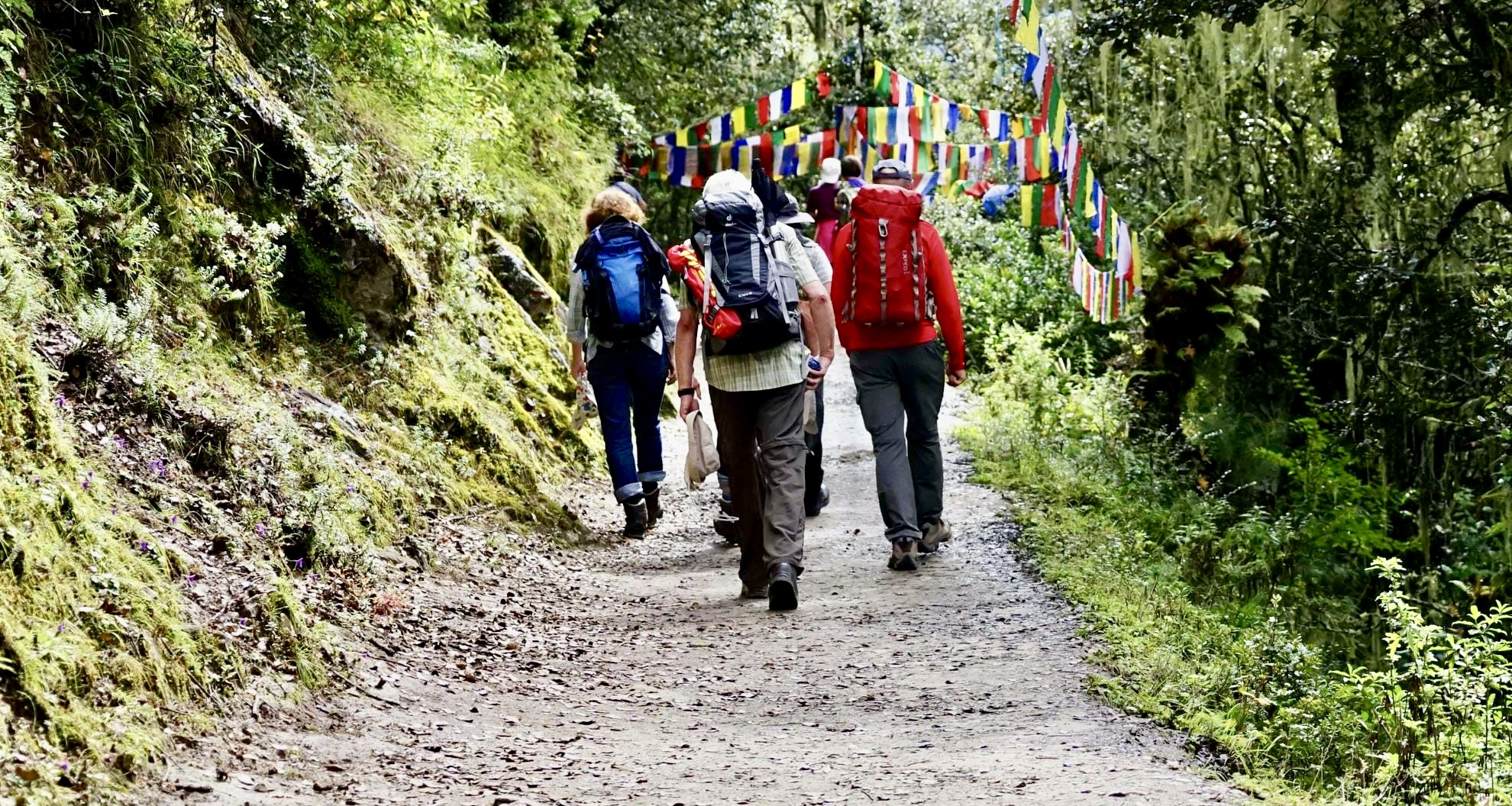
The trail is well-maintained but steep in many sections. It starts with a steady uphill climb through pine forests adorned with colorful prayer flags. After about an hour of hiking, you'll reach a rest area with prayer wheels and stunning views of the monastery in the distance.
Continuing onward, you'll arrive at the cafeteria approximately halfway up the trail. This is an excellent spot to rest, enjoy refreshments, and take photographs of the monastery across the gorge. From here, the trail becomes steeper but offers increasingly dramatic views.
The final approach involves descending a series of concrete steps, crossing a bridge over a 60-meter waterfall, and then climbing 120 steps to reach the monastery entrance. At the entrance, you'll need to deposit all electronic equipment, including cameras and phones, with the security staff.
For those who find the initial climb challenging, horses are available for hire at the base to take you up to the cafeteria. However, the descent must be done on foot, and horses are not permitted beyond the cafeteria.
Here are some essential tips for your hike:
- Wear comfortable hiking shoes with good ankle support
- Bring a hat, sunscreen, and sunglasses for sun protection
- Carry sufficient water (at least 1-2 liters per person)
- Pack some light snacks for energy
- Bring a walking stick if you have knee issues (rentals available at the base)
- Dress in layers as temperatures can vary throughout the day
- Carry a light jacket as it can be cool at the monastery level
- Maintain a steady pace and take breaks when needed
- Stay hydrated throughout the hike
Upon entering the monastery, you'll need to remove your shoes and any head coverings. Inside, you'll discover multiple temples with butter lamps illuminating beautiful paintings and statues of Buddhist deities. The main cave where Guru Rinpoche meditated is a highlight, though it's only open to the public once a year.
Thimphu: Experience Bhutan's Capital City
Buddha Dordenma statue and panoramic city views
Perched atop Thimphu's hills in the Kuenselphodrang Nature Park, the magnificent Buddha Dordenma statue stands as one of the most impressive landmarks in Bhutan's capital. This massive 51-meter-tall bronze statue of the seated Buddha is visible from across the valley and is considered one of the largest sitting Buddha statues in Asia. Inside the statue, visitors will find 125,000 smaller Buddha statues, making it not only an architectural marvel but also a profound symbol of peace in the city.
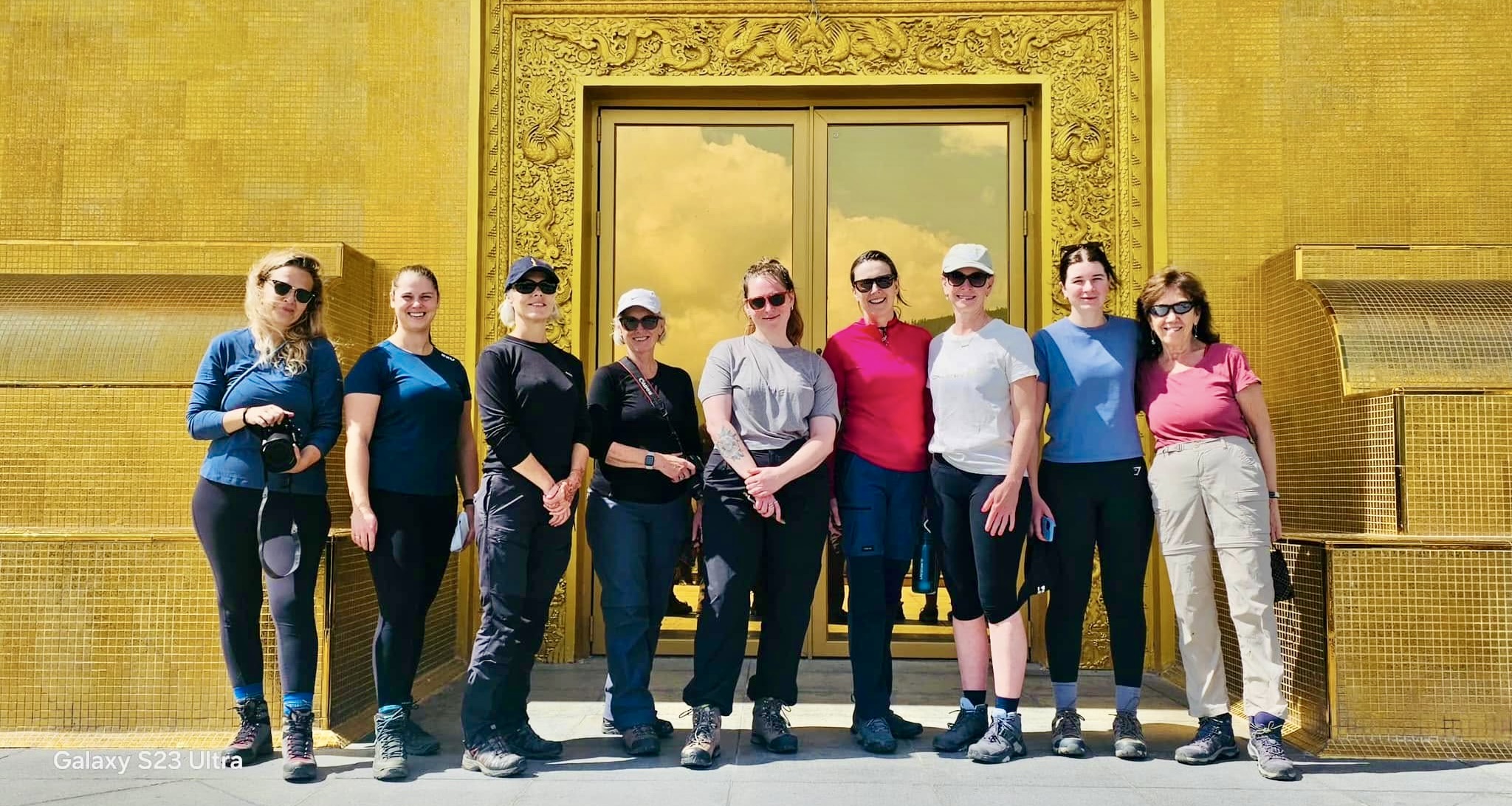
The Buddha Dordenma offers breathtaking panoramic views of the entire Thimphu valley. On clear days, you can see the sprawling city below and the surrounding mountain ranges, making it an ideal spot for photography enthusiasts. We recommend visiting during the morning hours when the light is perfect for capturing the statue and the panoramic vistas.
Tashichho Dzong: the impressive administrative center
The splendid Tashichho Dzong dominates the northern edge of the city on the west bank of the Wang Chhu river. This gorgeous Buddhist monastery and fortress serves as both the religious and administrative center of Bhutan. Dating back to 1641, the dzong showcases the magnificent Bhutanese architecture with its whitewashed walls, intricately carved wooden details, and golden roofs.
The dzong houses the throne room and offices of the King, the secretariat, and several government ministries. It's also the summer residence of the Je Khenpo (Chief Abbot) and the central monk body. When visiting, we recommend dressing modestly as a sign of respect. The fortress is particularly stunning in the evening when the lights illuminate its grand structures against the darkening sky.
Cultural attractions, including museums and handicraft centers
Thimphu offers a wealth of cultural attractions that provide insight into Bhutan's rich heritage. The National Textile Museum showcases the country's living arts of weaving with stunning displays of ancient and modern textiles. Here, visitors can explore the rich traditions of Bhutanese textiles that have been passed down through generations.
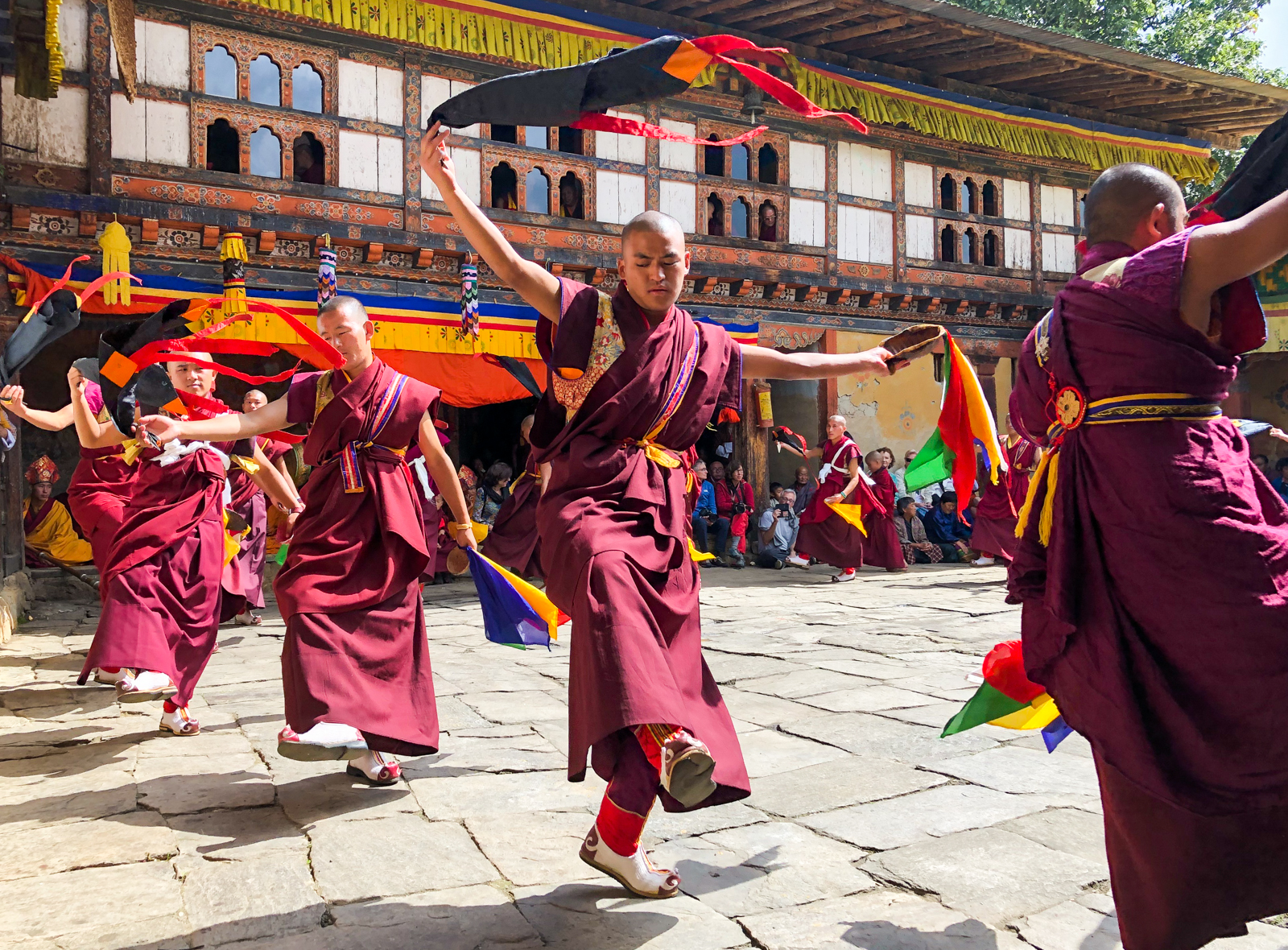
The National Folk Heritage Museum, set in a restored 150-year-old building, offers a glimpse into traditional rural Bhutanese life. Through exhibits of antique household items, tools, and equipment, visitors can experience authentic Bhutanese culture and traditions.
For those interested in traditional arts, the National Institute for Zorig Chusum, commonly known as "the painting school," provides instruction in Bhutan's 13 traditional arts. Visitors can watch students learning woodcarving, painting, embroidery, and statue-making, offering a fascinating look at how these ancient skills are being preserved.
Nightlife and local experiences at venues like Mojo Park
While most travelers come to Bhutan for its serene landscapes and spiritual sites, Thimphu offers a surprising nightlife scene centered around Chang Lam near the stadium. Mojo Park stands out as a fantastic music venue where you can enjoy live performances by local bands, including the popular Misty Terrace. This venue provides an excellent opportunity to mingle with locals and experience contemporary Bhutanese culture.
The Grey Area, Bhutan's first gastropub, is another popular spot for both tourists and locals, offering a blend of traditional and modern experiences with live music. For those looking to dance the night away, clubs like Space 34 and Vivacity are open until the early hours of the morning.
Thimphu's nightlife provides a fascinating contrast to the traditional aspects of Bhutanese culture and offers visitors a chance to see another side of this extraordinary capital city. We recommend visiting these venues to experience the vibrant local music scene and to interact with Bhutanese people in a relaxed setting.
Punakha: Discover the Ancient Capital
Punakha Dzong: the magnificent "Palace of Great Happiness"
Nestled at the confluence of the Pho Chhu (Male River) and Mo Chhu (Female River), Punakha Dzong stands as Bhutan's most beautiful dzong and one of its most majestic structures. Built in 1637-38 by Zhabdrung Ngawang Namgyal, the first unifier of Bhutan, this architectural masterpiece is officially known as Pungthang Dechen Phodrang (Palace of Great Happiness).
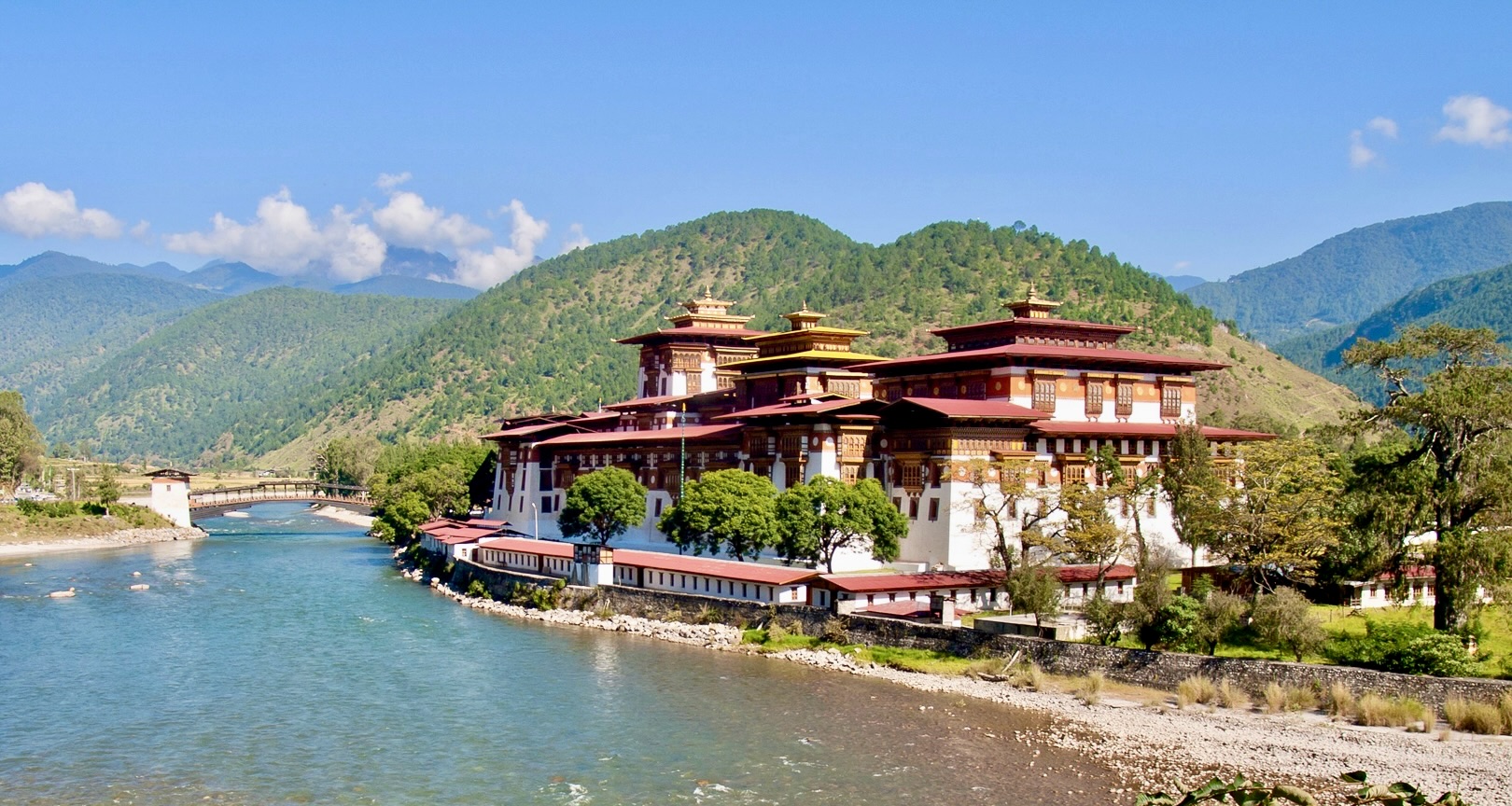
As the second oldest and second-largest dzong in Bhutan, it served as the administrative center and seat of the Bhutanese government until 1955 when the capital moved to Thimphu. Today, the dzong continues to function as the winter residence of Bhutan's Central Monastic Body led by the Je Khenpo.
The dzong houses sacred relics of the southern Drukpa Kagyu lineage, including the Rangjung Kharsapani and the sacred remains of Zhabdrung Ngawang Namgyal and Tertön Pema Lingpa. Its historical significance extends to being the coronation site for all of Bhutan's kings, including the most recent ceremony of His Majesty King Jigme Khesar Namgyel Wangchuck in 2008.
Chimi Lhakhang: the unique fertility temple and its phallus symbols
About 7.5 km from Punakha Dzong lies Chimi Lhakhang, a temple with a fascinating history and unique cultural significance. Built in 1499 by Ngawang Choegyel, this temple is dedicated to Lama Drukpa Kunley, fondly known as the "Divine Madman" due to his unconventional teaching methods.
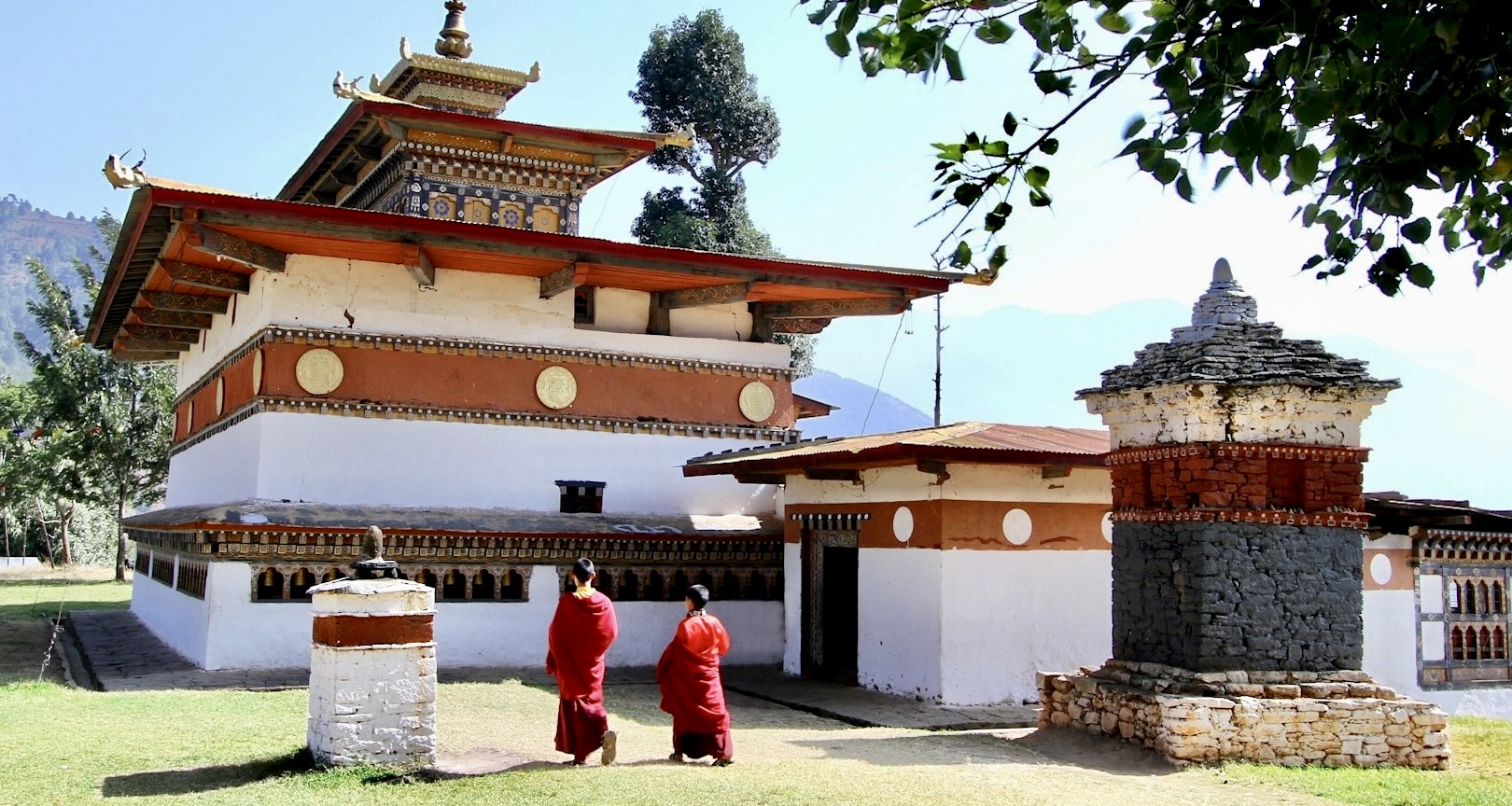
The temple is widely recognized as the Fertility Temple, attracting visitors from around the world. The village of Sopsokha surrounding the temple has become known for its distinctive phallus paintings adorning the walls of homes and shops. These symbols are tied to fertility blessings rather than anything pornographic, representing the Divine Madman's unorthodox approach to Buddhist teachings.
Locals uphold the tradition that those blessed at Chimi Lhakhang often name their children "Kunley" in tribute to the eccentric saint. The journey to the temple takes approximately 20 minutes along a picturesque path through fertile rice paddies and the charming village of Sopsokha Valley.
The longest suspension bridge in Bhutan and river activities
Punakha boasts one of Bhutan's most impressive suspension bridges, stretching 160-180 meters across the Po Chhu River. This bridge, decorated with vibrant prayer flags, offers breathtaking views of the surrounding mountains and valleys. Located near the Punakha Dzong, the bridge serves as a vital connection between Punakha town and the dzong, frequently used by locals as a convenient shortcut.
For adventure enthusiasts, Punakha Valley offers excellent white-water rafting opportunities on its rivers. The valley's unique position at the confluence of two major rivers creates perfect conditions for this thrilling activity. Visitors can choose between two exciting routes:
Mo Chhu River: A 10 km course featuring 10 rapids, classified as Class 2 to 2½, making it ideal for beginners or those seeking a gentler adventure.
Po Chhu River: A more challenging 16 km course with 15 rapids ranging from Class 2 to 4, perfect for thrill-seekers looking for an adrenaline-pumping experience.
Jacaranda season and best times to visit
Punakha Valley is particularly enchanting during jacaranda season when these magnificent trees bloom with mauve flowers, creating a stunning backdrop for the already impressive Punakha Dzong. This typically occurs in spring, making it one of the most picturesque times to visit the region.
The valley enjoys a mild subtropical climate at an average elevation of 1,200 meters above sea level, considerably lower than most other popular destinations in Bhutan. This unique microclimate makes Punakha warm in winter and hot in summer, offering a pleasant retreat from the cooler temperatures found elsewhere in the country.
Gangtey and Phobjikha Valley: Nature and Wildlife Haven
Black-necked crane conservation and annual festival
The Phobjikha Valley is one of the most important winter habitats for the rare and endangered black-necked cranes in Bhutan. These majestic birds migrate from their breeding grounds in the Tibetan Plateau to this glacial valley every year between late October and mid-February. Upon arrival, they perform a fascinating ritual - circling the Gangteng Monastery three times before descending to the wetlands, and repeating this when departing in spring. To Bhutanese Buddhists, this natural circumambulation (kora) is deeply significant and considered highly auspicious.
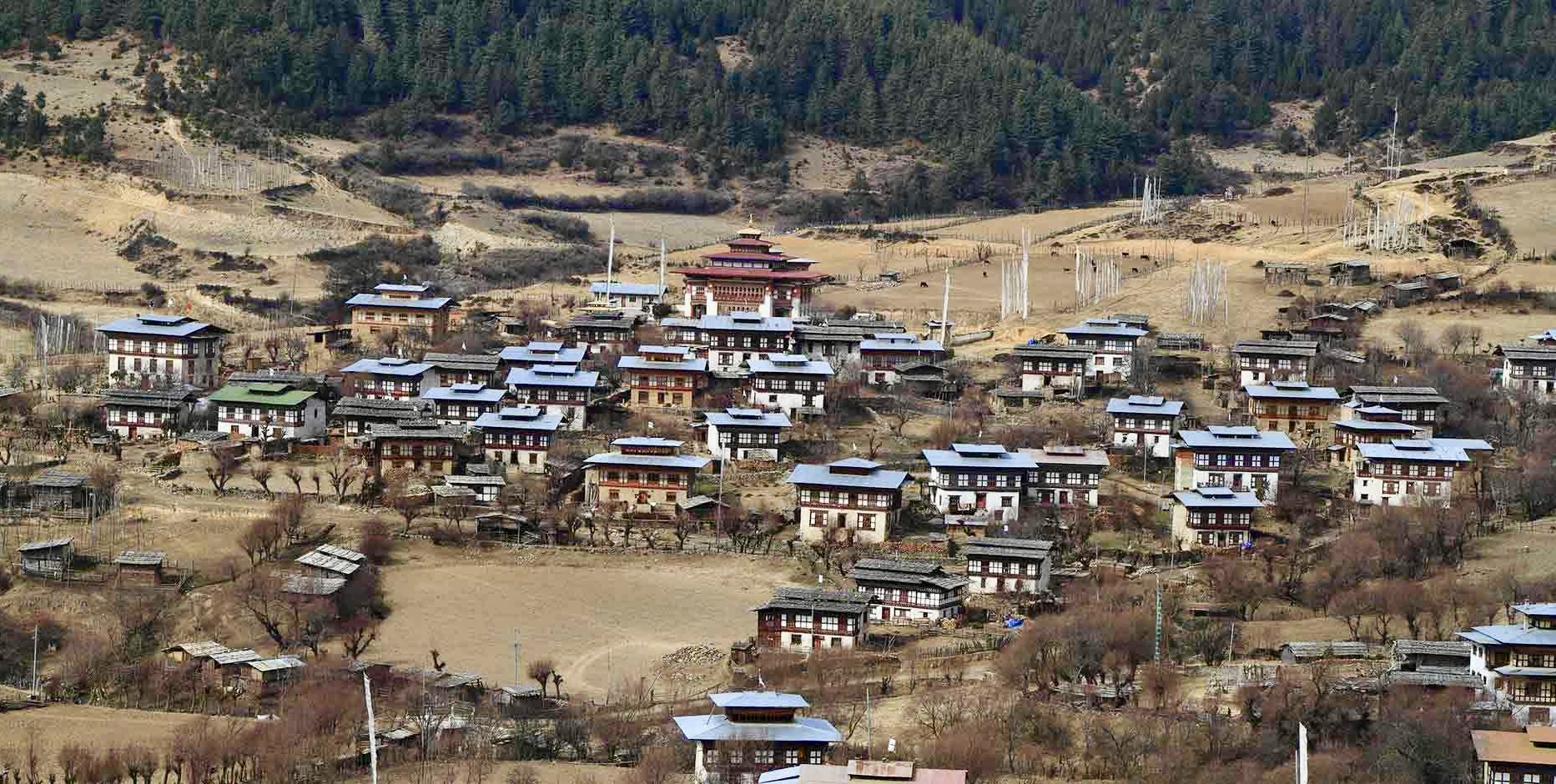
Each year on November 11th, the valley celebrates the Black-necked Crane Festival in the courtyard of the Gangteng Monastery. This vibrant festival combines cultural performances with conservation awareness, featuring traditional mask dances and special crane dances performed by schoolchildren dressed in black and white costumes that imitate the graceful movements of these birds. The festival not only honors the cranes but also serves as a platform to renew the community's commitment to their protection.
Gangtey Goemba monastery and its spiritual significance
Perched majestically on a ridge overlooking the Phobjikha Valley, Gangtey Monastery (or Gangteng Goemba) is a stunning 17th-century Buddhist temple that holds immense spiritual importance. Built in 1613 by Gyalse Rigdzin Pema Thinley, the grandson and reincarnation of the renowned Bhutanese treasure discoverer Pema Lingpa, it serves as the main seat of the Pema Lingpa tradition in Western Bhutan.
The monastery complex features intricate architecture, exquisite paintings, and sacred relics that showcase the rich cultural heritage of Bhutan. Besides the annual Crane Festival, Gangtey Monastery also hosts the Gangtey Tshechu, a significant religious festival featuring vibrant mask dances and rituals that takes place in autumn, usually in October or November according to the Bhutanese lunar calendar.
Nature trails and hiking opportunities through pristine landscapes
The Phobjikha Valley offers several remarkable hiking and trekking opportunities that allow visitors to immerse themselves in its pristine natural environment. The most popular is the Gangtey Nature Trail, a relatively easy 5km path that takes about two hours to complete. Beginning at the Gangtey Monastery, the trail winds through pine forests, meadows, and streams before concluding at Khewa Lhakhang.
Along this scenic route, hikers can spot various wildlife including black-necked cranes (in winter), barking deer (muntjacs), wild boars, and occasionally foxes. The valley's unique ecosystem, characterized by dwarf bamboo and marsh vegetation, creates an ideal habitat for these creatures.
The best time for hiking in Phobjikha Valley is during spring (March to May) when the valley blossoms with flowers and autumn (September to November) when the weather is pleasant and clear. However, winter offers the unique opportunity to witness the black-necked cranes in their natural habitat, making it an equally appealing time to visit despite the colder temperatures.
Bumthang: Bhutan's Spiritual Heartland
Ancient monasteries and temples including Jambay Lhakhang
Bumthang, often referred to as the spiritual heartland of Bhutan, is home to some of the oldest and most sacred religious sites in the country. At the center of this spiritual landscape is Jambay Lhakhang, one of the two oldest temples in Bhutan, dating back to the 7th century. Built by the Tibetan King Songtsen Gampo, it's part of the 108 temples he constructed across the Himalayan region to subdue evil spirits. The temple's present architectural appearance dates from the early 20th century, but its spiritual significance remains timeless.
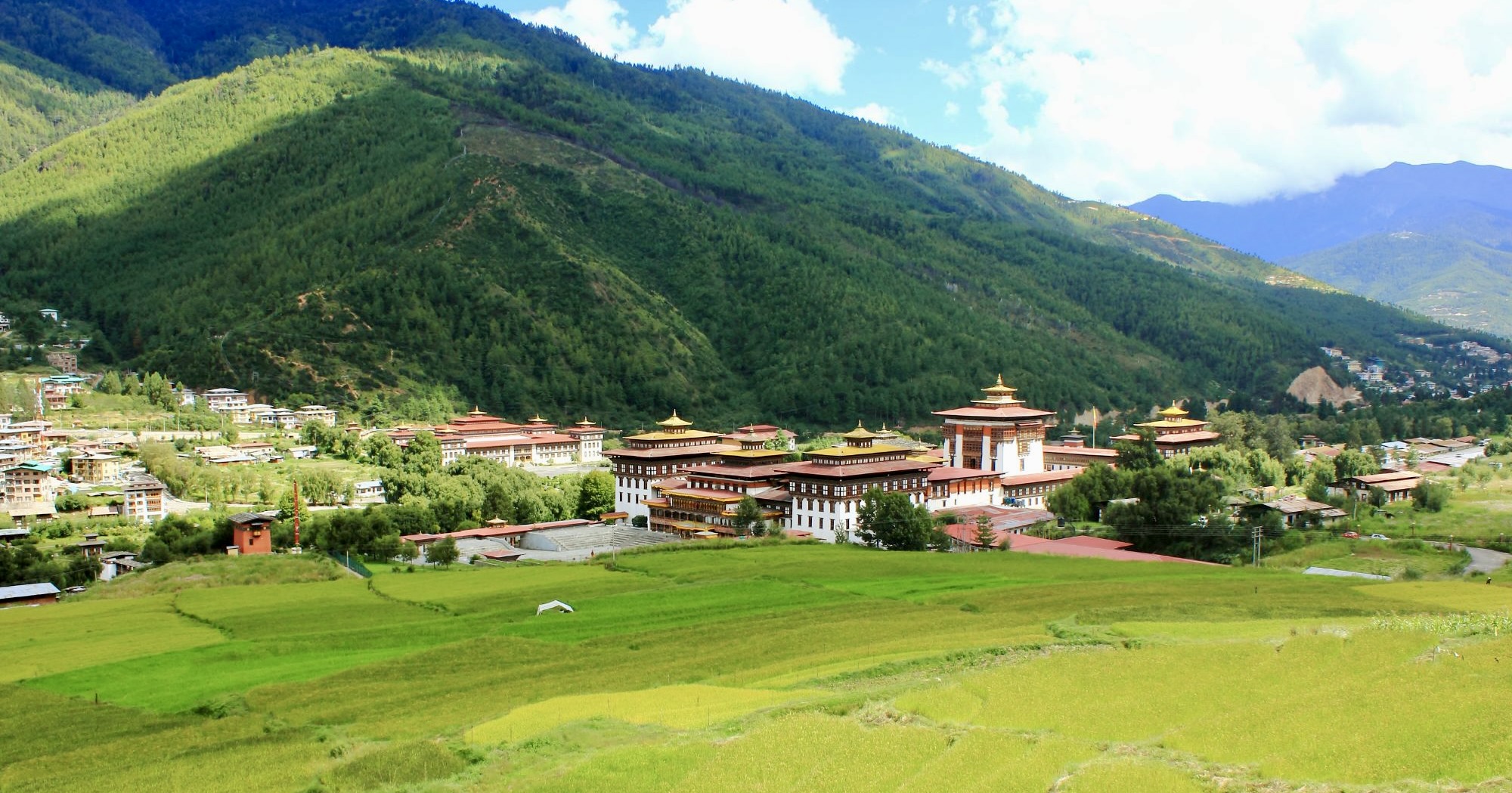
As we explore Bumthang's sacred sites, we can't miss Kurje Lhakhang, one of the most sacred places in the kingdom. This impressive complex consists of three temples, with the oldest built in 1652 on the rock face where Guru Rinpoche (Padmasambhava) meditated in the 8th century. The second temple is considered the holiest as it was built on a cave containing a rock with the imprint of Guru's body. The third temple was added in the 1990s by Ashi Kesang, the Queen Mother. These three temples are surrounded by an impressive wall of 108 chortens, symbolizing their sacred importance.
Another significant religious site is Tamshing Lhakhang, founded in 1501 by Terton Pema Lingpa, who is revered as a reincarnation of Guru Padmasambhava.
Local industries: Red Panda Brewery and Swiss Cheese Factory
Beyond its spiritual significance, Bumthang is also known for its unique local industries that have become attractions in their own right. The Red Panda Brewery stands as Bhutan's first brewery, offering visitors a chance to taste locally brewed beer, including their signature Red Panda Weissbeer. This refreshing wheat beer has gained popularity and represents the region's blend of traditional culture with modern enterprise.
Bumthang is particularly renowned for its dairy products, and the region hosts a Swiss cheese factory that produces delicious Gouda and Emmental cheeses. The cheese-making tradition in Bumthang came about through Swiss influence, and today, visitors can tour the facility to learn about the cheese-making process and sample these delectable products. The combination of Red Panda beer and locally produced cheese makes for a perfect culinary experience after exploring the valley's spiritual sites.
Kurjey Lhakhang complex and its religious significance
Kurjey Lhakhang holds a special place in Bhutan's spiritual landscape as one of the most sacred religious sites in the kingdom. The name "Kurjey" derives from "Kur" (body) and "Jey" (imprint), referring to the body imprint of Guru Rinpoche preserved in a cave within the temple complex.
According to legend, Guru Rinpoche came to Bumthang in the 8th century to subdue evil spirits that were causing illness to the local king. He meditated in a cave at this site, leaving his body's imprint on the rock. The oldest temple in the complex, Guru Lhakhang, was built directly over this sacred cave in the 17th century by Trongsa Penlop Chogyal Minjur Tenpa.
The second temple, Sampa Lhundrup Lhakhang, was constructed by Bhutan's first king, while the third and most modern temple was built in the 1990s by the Queen Mother Ashi Kesang. Together, these three temples form a powerful spiritual nexus that draws pilgrims from across Bhutan and beyond. The entire complex is encircled by 108 chortens (stupas), adding to its sacred atmosphere.
Haa Valley: Off-the-Beaten-Path Adventures
Pristine natural beauty and rural village experiences
Nestled in the southwestern part of Bhutan, Haa Valley is one of the country's most serene and picturesque destinations. Often referred to as the "Hidden-Land Rice Valley," this pristine region offers a unique blend of natural beauty and cultural richness that remains largely untouched by mainstream tourism. We find Haa to be one of the smallest districts in Bhutan, both geographically and population-wise, spanning approximately 1,706 square kilometers with around 12,000 residents.
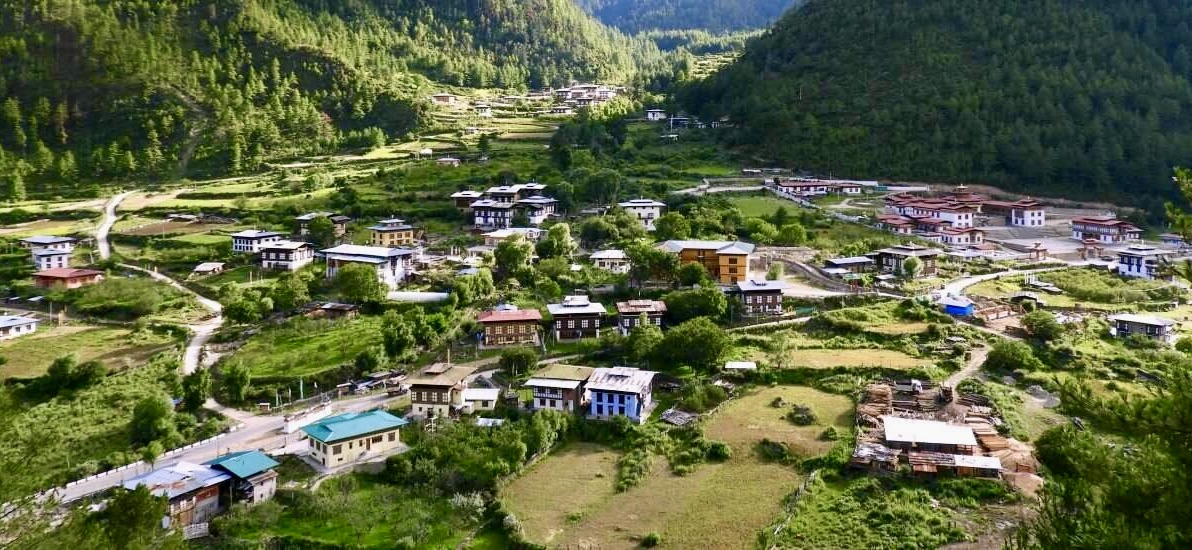
What makes Haa Valley special is its authentic rural character. When visiting, we'll encounter small, traditional villages scattered across the landscape where locals maintain their traditional way of life centered around agriculture and animal husbandry. The valley's sparse population density has allowed it to preserve its pristine environment and cultural heritage, making it a perfect destination for travelers seeking an authentic Bhutanese experience away from the tourist crowds.
Chele La Pass: the highest motorable pass with spectacular views
At 3,988 meters (13,083 feet), Chele La Pass stands as Bhutan's highest motorable mountain pass, connecting Paro Valley with Haa Valley. We recommend making this spectacular drive a key part of any visit to Haa. On clear days, the pass rewards visitors with breathtaking panoramic views of the Himalayas, including Mount Jomolhari and Jichu Drake.
The journey to Chele La Pass itself is memorable, with the winding road taking us through dense forests of pine, fir, and rhododendron trees. At the summit, we'll find colorful Buddhist prayer flags fluttering in the mountain breeze, adding a spiritual dimension to the natural splendor. During spring, the surrounding meadows burst into bloom with alpine flowers, while winter brings a dusting of snow that transforms the landscape into a pristine wonderland.
Traditional architecture and authentic local interactions
In Haa Valley, we can experience Bhutanese architecture in its most authentic form. The valley is home to several significant cultural sites, including the twin temples of Lhakhang Karpo (White Temple) and Lhakhang Nagpo (Black Temple). Dating back to the 7th century, these temples are nestled at the base of the revered Meri Puensum mountains and remain central to the spiritual life of the local community.
The traditional Bhutanese houses in villages like Hatey showcase the region's distinctive architectural style. What makes a visit to Haa Valley truly special is the opportunity for authentic cultural immersion. We can stay in local homestays where we'll experience warm Bhutanese hospitality, savor home-cooked meals featuring local specialties like Hoentay (buckwheat dumplings), and participate in daily village activities.
Trongsa: Historical Center of Bhutan
Trongsa Dzong: the largest fortress and seat of the Wangchuck Dynasty
Perched dramatically on a ridge overlooking the deep Mangde Chhu river gorge, Trongsa Dzong stands as the largest fortress in Bhutan and a symbol of the country's rich royal heritage. Built in 1648 by Zhabdrung Ngawang Namgyal, this imposing structure has served as the ancestral seat of the Wangchuck dynasty, Bhutan's ruling family.
The dzong's origins date back to 1543 when Ngagi Wangchuk, the great-grandfather of Zhabdrung Ngawang Namgyal, established a small meditation room at this site after discovering what he believed were the hoof prints of the horse belonging to the deity Palden Lhamo. The settlement that grew around this sacred spot was called "Trong-sar" (new village), which eventually became Trongsa.
With its maze of courtyards, passageways, and corridors connecting 25 temples, Trongsa Dzong represents the pinnacle of Bhutanese architectural craftsmanship. The fortress houses sacred temples dedicated to various Tantric deities including Yamantaka, Hevajra, Cakrasamvara, and Kalacakra.
Strategic importance and connection to Bhutan's royal history
Trongsa Dzong's strategic location gave it unparalleled importance in Bhutan's political landscape. Positioned at the center of the country, it effectively controlled the east-west trade routes that passed directly through the dzong's courtyard. This central position allowed the rulers of Trongsa, known as Penlops, to exert influence across eastern and central Bhutan, collecting significant tax revenue from passing trade.
The connection between Trongsa Dzong and Bhutan's monarchy is profound. Before the establishment of the monarchy in 1907, the Penlops of Trongsa had already become the most powerful figures in the country. The father of Bhutan's first king, Jigme Namgyel, served as the Penlop of Trongsa and extended his influence throughout the kingdom from this fortress.
When his son Ugyen Wangchuck became Bhutan's first hereditary king in 1907, a tradition was established whereby the crown prince must serve as the Trongsa Penlop before ascending the throne.
Spectacular views of the Mangdi Chhu river gorge
Trongsa Dzong's location offers some of the most breathtaking views in all of Bhutan. The fortress is dramatically positioned high above the Mangde Chhu river gorge, creating what many travelers describe as "the most spectacularly sited dzong in Bhutan." The sheer drop to the south often disappears into clouds and mist, adding to the fortress's mystical atmosphere.
From the dzong, visitors can enjoy panoramic vistas of the surrounding mountains and valleys. The watchtower, known as Ta Dzong, which once served as a defense against invaders, now houses a museum dedicated to Bhutan's monarchy and offers even more spectacular viewpoints of the landscape.
The scenic beauty surrounding Trongsa Dzong is best appreciated during the spring (March to May) and autumn (September to November) months when the weather is mild and the landscapes are vibrant.
Immersive Cultural Experiences Throughout Bhutan
Traditional archery: trying your hand at the national sport
Archery is more than just a sport in Bhutan—it's our national passion and an essential part of our cultural identity. When you visit our beautiful kingdom, you'll notice archery grounds in nearly every village across the country. These lively venues serve as important social hubs where communities gather not just to compete but to celebrate our traditions.
Unlike modern archery, Bhutanese traditional archery uses bamboo bows and arrows, with targets placed at an impressive distance of 140 meters apart. What makes our archery unique is the festive atmosphere that surrounds it. While archers aim for their targets, team members perform celebratory dances and sing traditional songs. There's also plenty of good-natured banter and teasing between competing teams, creating a joyful environment that exemplifies our Bhutanese spirit.
Bhutanese cuisine: ema datshi and other local delicacies
Our Bhutanese cuisine reflects our unique geography and cultural values, with dishes that will tantalize your taste buds and warm your soul. At the heart of our culinary tradition is ema datshi, our beloved national dish. This spicy stew combines fiery chili peppers with local cheese to create a dish that perfectly represents our love for bold flavors. We serve it with red rice, a nutritious variety that grows in the high-altitude valleys of central Bhutan.
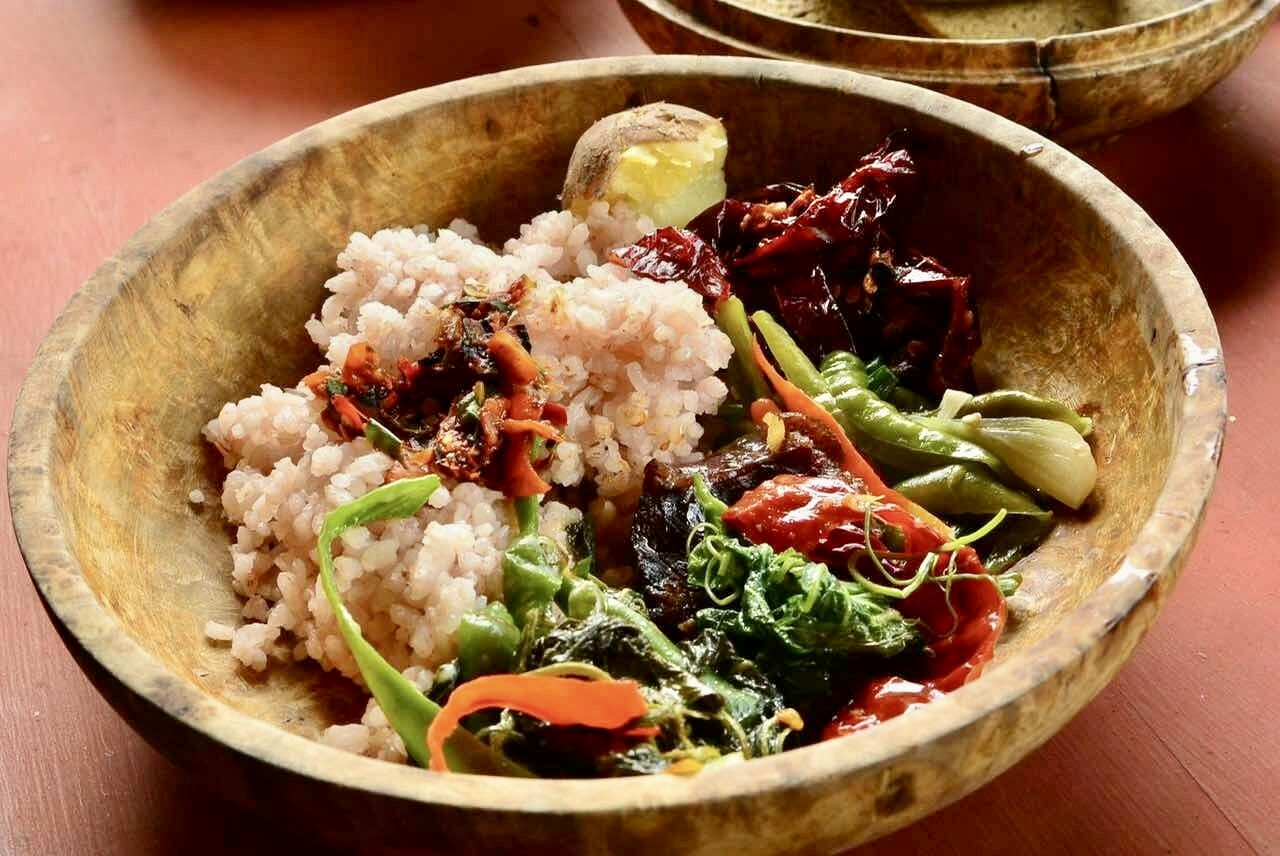
Beyond ema datshi, we invite you to sample other traditional delicacies such as phaksha paa (pork with red chilies), jasha maroo (spicy chicken stew), and momos (dumplings filled with meat or vegetables). For the more adventurous food enthusiasts, we recommend trying shakam datshi (dried beef cooked with cheese) or hoentay (buckwheat dumplings stuffed with turnip greens).
Our traditional beverages are equally distinctive. We'll introduce you to suja (butter tea), a warming drink perfect for our mountain climate, and ara, a locally distilled rice wine that's often served during special occasions and festivals. Meals in Bhutan are communal affairs that bring people together, and we look forward to sharing these authentic culinary experiences with you.
Tsechu festivals: experiencing colorful masked dance celebrations
Tsechus are our most important and vibrant religious festivals, held throughout the year in various dzongs (fortresses) and monasteries across Bhutan. These multi-day celebrations commemorate Guru Rinpoche, who introduced Buddhism to Bhutan in the 8th century. The highlight of any tsechu is the spectacular cham dances performed by monks wearing elaborate masks and colorful costumes.
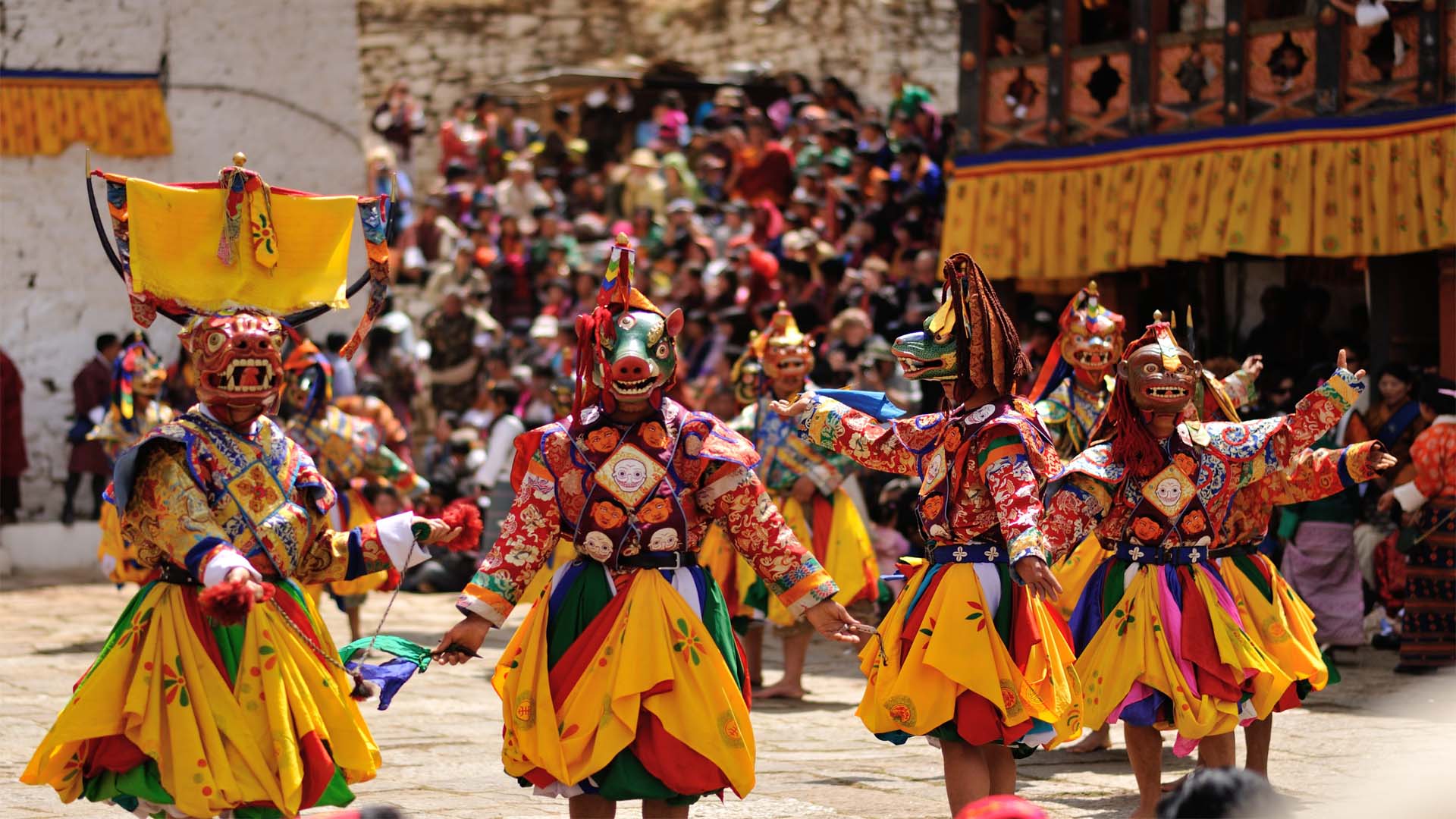
Each mask and dance has profound spiritual significance, often depicting stories from Buddhist mythology where good triumphs over evil. The Guru Tshengye (Eight Manifestations of Guru Rinpoche) and the Dance of the Lords of the Cremation Grounds are particularly awe-inspiring performances that have remained unchanged for centuries.
The most famous tsechus take place in Paro (spring) and Thimphu (autumn), drawing thousands of Bhutanese from across the country who dress in their finest traditional attire. For locals, attending these festivals is considered deeply meritorious—it's believed that watching the sacred dances helps cleanse one's sins and bring blessings.
We recommend planning your visit to coincide with one of these festivals, as they offer an unparalleled window into our living spiritual traditions.
Traditional costumes: wearing the Gho and Kira
In Bhutan, our traditional clothing isn't just reserved for special occasions—it's part of our daily lives. Men wear the gho, a knee-length robe tied at the waist with a cloth belt called a kera. The way the gho is worn is distinctive, with a large pouch formed in the front that traditionally served as a pocket for carrying items like bowls and food. Today, this pouch might hold modern necessities like wallets and phones.
Women wear the kira, an ankle-length dress consisting of a rectangular piece of cloth wrapped around the body and fastened at the shoulders with silver brooches called koma. It's paired with a wonju (inner blouse) and a tego (short jacket). These garments showcase the incredible artistry of Bhutanese weavers, with intricate patterns and vibrant colors that often indicate the wearer's region of origin.
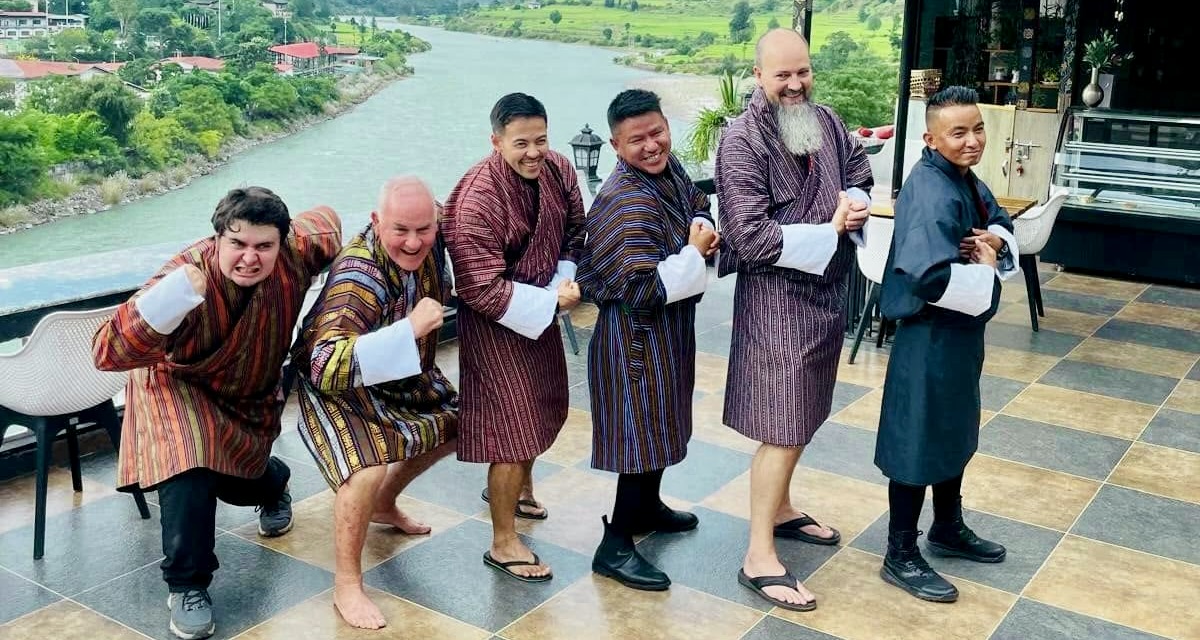
The colors and patterns of our traditional dress also carry symbolic meaning. The white scarves (kabney) worn by men over their gho indicate their rank in society, with different colors representing different positions, from the saffron scarf of the king to the white scarf of ordinary citizens. By learning about and experiencing our traditional clothing, you'll gain insights into Bhutan's social structure and values.
Adventure Activities Beyond Cultural Sites
Trekking routes through the Himalayas for various difficulty levels
Bhutan offers some of the most spectacular trekking experiences in the world, with routes suitable for all skill levels. We recommend several treks based on your experience and fitness level:
For beginners and moderate trekkers:
- Druk Path Trek: This popular 9-day trek connects the valleys of Thimphu and Paro along ancient trading routes. With moderate elevation gains and stunning vistas of peaks like Jitchu Drake, Chomolhari, and Gangkar Punsum, it's perfect for those new to Himalayan trekking.
- Dagala Thousand Lakes Trek: A 6-day adventure that takes you through pristine crystal-clear lakes with panoramic views of the entire Himalayan range, including Mount Everest, Jomolhari, and Jichu Drake.
For experienced trekkers:
- Jomolhari Trek: This challenging trek offers diverse landscapes and cultural experiences. It's considered one of the most beautiful trekking areas in the Himalayas, with maximum altitudes reaching 4,950m/16,235ft.
- Laya Gasa Trek: Covering long distances through northern Bhutan's rarely visited areas, this trek takes you through four Himalayan passes from Paro to Laya village, Gasa's hot springs, and finally to Punakha Valley.
For advanced adventurers:
Snowman Trek: Known as one of the most challenging treks in the world, this 25-30 day expedition traverses along the Bhutan-Tibet border. Covering approximately 356km and crossing eight mountain passes, it takes you through unmapped territories and several peaks over 7,000m. It's perfect for those seeking a true expedition experience.
Whitewater rafting in Punakha's rivers
For those seeking a different kind of adventure, whitewater rafting on Punakha's rivers offers an exhilarating experience. The Pho Chu River, fed by the Lunana glaciers, provides a thrilling 16km journey through class 2-4 rapids.
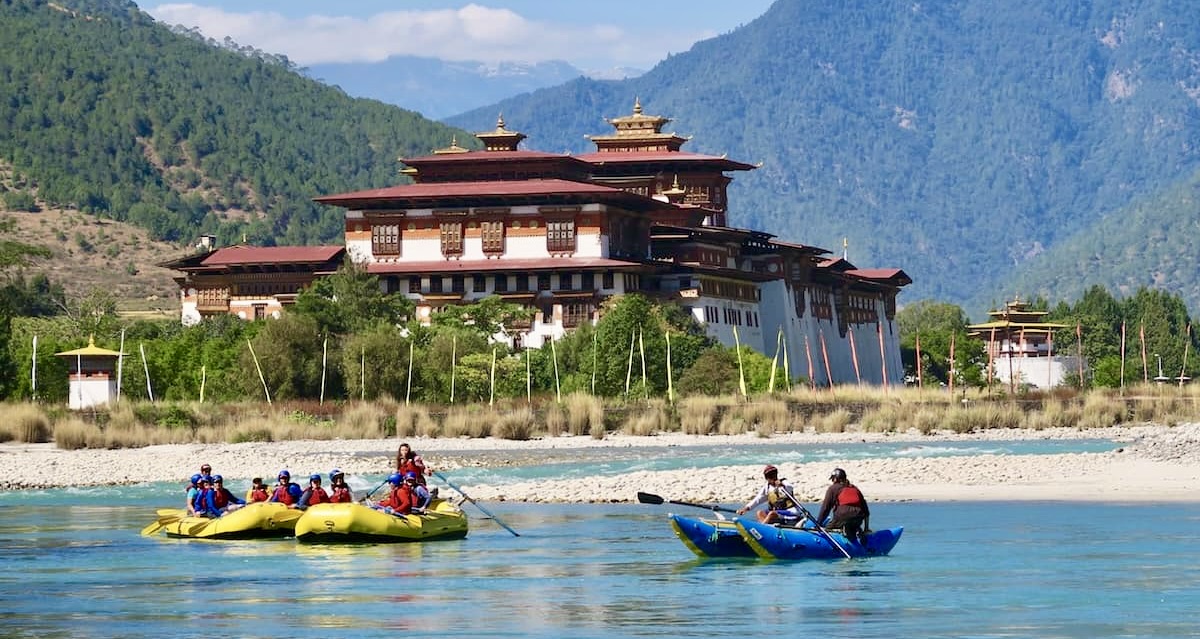
We particularly recommend the rafting adventure that begins along the Mo Chu River and ends near the magnificent Punakha Dzong. As we navigate through the rapids, we'll be surrounded by alpine scenery and enjoy views of the surrounding Himalayan peaks. The crystal-clear, turquoise waters create a stark contrast against the lush landscapes, making this not just an adrenaline-pumping activity but also a visual feast.
Hot stone baths for relaxation and traditional healing
After days of trekking or rafting, there's no better way to rejuvenate than with a traditional Bhutanese hot stone bath. This centuries-old practice combines heated river stones with medicinal herbs to create a therapeutic bathing experience.
The process begins with river stones being heated in a fire until they're glowing red. These stones are then carefully placed in a wooden tub filled with water and medicinal herbs. As the stones release their heat, they create a mineral-rich bath that helps soothe sore muscles, improve circulation, and relieve joint pain.
The hot stone bath perfectly embodies Bhutan's holistic approach to wellbeing, connecting physical relaxation with spiritual and mental wellness. It's an ideal way to experience traditional Bhutanese healing practices while recovering from your adventures in the Himalayas.
Practical Travel Tips for Bhutan
The best seasons to visit different regions
Timing your visit to Bhutan is crucial for an optimal experience. Spring (March to May) offers comfortable temperatures and stunning rhododendron blooms across valleys, making it perfect for photography and trekking in central and western regions like Thimphu, Paro, and Punakha.
Fall (September to November) brings clear skies and spectacular visibility of the Himalayan peaks, ideal for visiting higher-altitude destinations such as Bumthang and Gangtey. The weather is crisp, and many colorful festivals take place during this season.
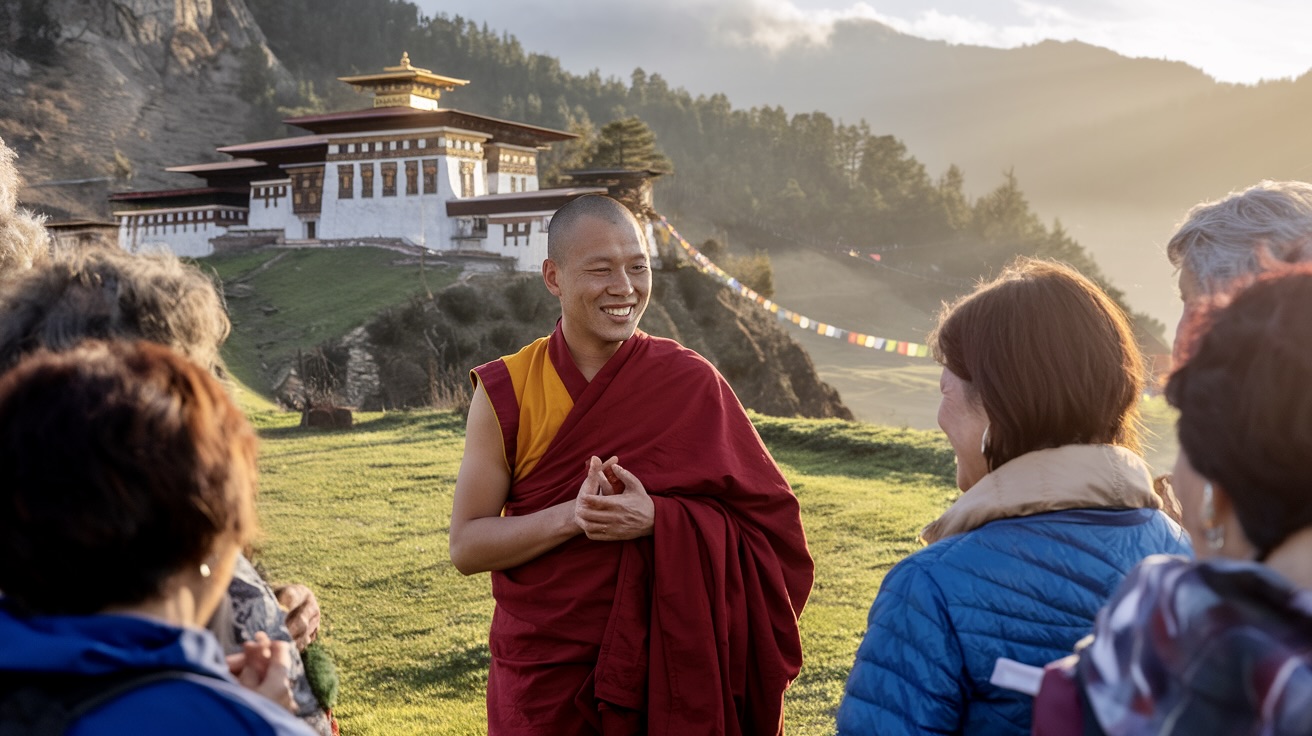
Summer (June to August) coincides with the monsoon season, with rain affecting much of the country. However, this can be a good time to explore eastern Bhutan, which receives less rainfall. The lush greenery and lower tourist numbers mean better deals and a more authentic experience.
Winter (December to February) sees fewer visitors but offers clear days in central Bhutan. While higher passes may be snow-covered, the valleys remain accessible with daytime temperatures that are quite pleasant. This is also an excellent time for bird watching in the Phobjikha Valley, where black-necked cranes migrate from Tibet.
Understanding the daily tourist fee and travel requirements
The Sustainable Development Fee (SDF) is a cornerstone of Bhutan's "high value, low volume" tourism approach.
Indian nationals are subject to a different fee structure, paying approximately 1,200 Bhutanese Ngultrum (about $15) per night. The SDF helps fund conservation efforts, infrastructure development, and free healthcare and education for Bhutanese citizens.
All visitors must obtain a visa before arrival, which costs $40 and is non-refundable. The visa must be arranged through a licensed Bhutanese tour operator or their international partner. Your passport should be valid for at least six months beyond your planned departure date.
While travel insurance is no longer mandatory for visa processing, it's strongly recommended to cover any emergencies. We advise securing comprehensive coverage that includes medical evacuation, which can be extremely costly in remote areas.
Photography opportunities and cultural etiquette
Bhutan offers incredible photography opportunities, from dramatic mountain landscapes to colorful festivals and ornate architecture. When photographing sacred sites like dzongs and monasteries, remember that indoor photography is often prohibited or requires a special permit (usually around 1,000 BTN or $13). The iconic Tiger's Nest Monastery carries a higher fee of 2,000 BTN (about $25).
When capturing images of people, especially monks or participants in religious ceremonies, always ask permission first. This shows respect for their privacy and cultural traditions. Some older Bhutanese may believe that photographs capture a part of their soul, so be particularly sensitive in rural areas.
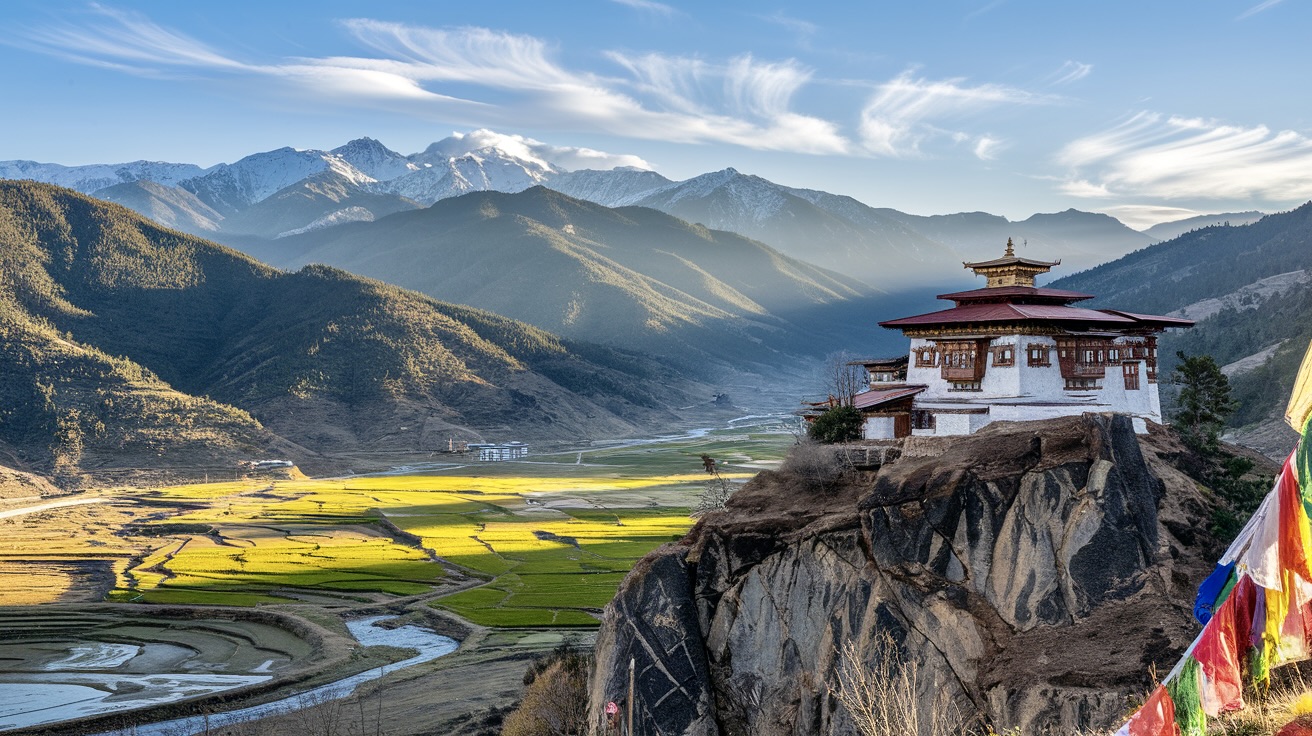
Regarding cultural etiquette, remove your hat and shoes when entering temples or monasteries. Dress modestly, covering shoulders and knees, especially when visiting religious sites. Walking clockwise around stupas, prayer wheels, and mani walls is customary, respecting Buddhist tradition.
When visiting someone's home, it's polite to accept offerings of food or drink. If you're invited to a meal, leaving a small portion of food on your plate signals that you've had enough. Avoid pointing with your finger or feet, which is considered disrespectful. Instead, use your open hand to indicate direction.
Remember that public displays of affection are frowned upon in Bhutanese society. Maintaining a respectful demeanor will enhance your experience and show appreciation for the country's unique cultural heritage that the tourism model aims to preserve.
Bhutan's extraordinary blend of ancient traditions, breathtaking landscapes, and spiritual richness makes it an unparalleled destination for travelers seeking authentic experiences. From the gravity-defying Tiger's Nest Monastery perched on a cliff to the peaceful valleys of Bumthang and Phobjikha, each location offers its own unique window into the Kingdom's soul. Whether exploring the historical significance of Trongsa, immersing yourself in the vibrant culture of Thimphu, or venturing off the beaten path in Haa Valley, Bhutan rewards visitors with genuine connections and transformative moments.
As you plan your journey to this Himalayan kingdom, remember that Bhutan's approach to tourism—focused on high-value, low-impact experiences—helps preserve the very magic that draws visitors. Luxury Holidays Nepal can help craft your perfect Bhutanese adventure, ensuring you experience the perfect balance of cultural immersion, natural beauty, and spiritual enlightenment. Take the time to explore these ten remarkable destinations and discover why Bhutan truly lives up to its reputation as the last Shangri-La on Earth.
Contact Luxury Holidays Nepal to craft your perfect Bhutanese journey today.
If you need any further information, please contact us by email: [email protected], Phone: +977- 985 100 5129 (WhatsApp).




